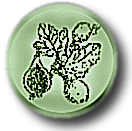Subsystem: Nitrate and nitrite ammonification
This subsystem's description is:
Variant codes:
Bacteria could have different combinations of two general types of NiR and three main types of NaR. At least 20 different functional variants of NiR/NaR patterns have been observed in available bacterial genomes. For simplicity we noted thre major variants:
1. Only Nitrite reductases (NiR) of any kind
2. Only Nitrate reductases (NaR) of any kind
3. Both Nitrate and nitrite reductases (Nir and NaR) of any kind
-1. No NiR and NaR
For more information, please check out the description and the additional notes tabs, below
| Literature References | [Regulation of nitrogen metabolism in gram-positive bacteria]. Doroshchuk NA Molekuliarnaia biologiia 2006 Sep-Oct | 17086994 |
|---|
| Diagram | Functional Roles | Subsystem Spreadsheet | Description | Additional Notes | Scenarios | |||||||||||||||||||
Oops! We thought there was a diagram here, but we can't find it. Sorry
Variant codes: Bacteria could have different combinations of two general types of NiR and three main types of NaR. At least 20 different functional variants of NiR/NaR patterns have been observed in available bacterial genomes. For simplicity we noted thre major variants: 1. Only Nitrite reductases (NiR) of any kind 2. Only Nitrate reductases (NaR) of any kind 3. Both Nitrate and nitrite reductases (Nir and NaR) of any kind -1. No NiR and NaR Nitrogen is an essential element for living organisms. Inter-conversion of nitrogen species between a number of redox states (+5 to -3) forms the biogeochemical nitrogen cycle which has multiple environmental impacts and industrial applications [1]. Inorganic nitrogen oxides should be first reduced to ammonium, which can be further incorporated into organic nitrogen using glutamine synthase. Diazotrophic prokaryota possess nitrogenase genes and are able to fix molecular nitrogen from the atmosphere. On the other hand, bacteria can obtain metabolic energy by redox processes utilizing soluble nitrogen oxides, nitrate and nitrite, as terminal respiratory oxidants in oxygen limiting conditions. Two dissimilar pathways of nitrate respiration, ammonification and denitrification, involve formation of a common intermediate, i.e. nitrite, but end in different products, ammonia and gaseous nitrogen oxides (NO or N2O) or dinitrogen, respectively (Fig. 1). Autotrophic nitrification is a two-step process of an oxidative conversion of ammonia to nitrite via hydroxylamine, carried out by ammonia-oxidizing bacteria, and the further oxidation of nitrite to nitrate, performed by nitrite-oxidazing chemolithoautotrophic bacteria. Finally, the cell should be able to detoxify the exogenously/metabolically produced NO and reactive nitrogen species. At the first step, nitrite is formed by one of three different types of nitrate reductases: soluble assimilatory NAS, membrane-associated respiratory NAR, and periplasmic dissimilatory NAP [2, 3]. NAS is located in the cytoplasmic compartment and participates in nitrogen assimilation (termed NaRas here). NAR is usually a three-subunit complex anchored to the cytoplasmic face of the membrane with its active site located in the cytoplasmic compartment and is involved in anaerobic nitrate respiration. NAP is a two-subunit complex, located in the periplasmic compartment, that is coupled to quinol oxidation via a membrane anchored tetraheme cytochrome. The members of all three classes of enzymes bind the bis-molybdopterin guanine dinucleotide cofactor at the active site, but they differ markedly in the number and nature of cofactors used to transfer electrons to this site. Analysis of prokaryotic genomes reveals that the different nitrate reductases are phylogenetically widespread. The next step of ammonification is conversion of nitrite into ammonia by either membrane-bound respiratory cytochrome c nitrite reductase NrfA or by one of the three different cytoplasmic assimilatory NiR isoenzymes. In e- and d-proteobacteria, NrfA forms a stable complex with the transmembrane component NrfH, whereas in g-proteobacteria, NrfH is thought to be replaced by the nrfBCD gene products [4]. Among soluble NiRs, most widely distributed is a siroheme-containing NADPH-dependent enzyme (NirBD in E.coli). Cyanobacteria, plants and some a-proteobacteria possess an distinct cytoplasmic NiR, which is ferredoxin-dependent [5]. Some strictly anaerobic species (i.e. clostridia), have another two-component NiR, which is not yet characterized [6]. The topological arrangements of nitrate and nitrite reductases in bacteria necessitate the synthesis of transporter proteins that carry the nitrogen oxyanions across the cytoplasmic membrane. For assimilation of nitrate (and nitrite) there are two types of uptake system known: ABC transporters that are driven by ATP hydrolysis, and secondary transporters reliant on a proton motive force, which belongs to either the nitrite/nitrate transporter family (NarK), the nitrite uptake NirC family, or the formate/nitrite transporter family [7]. Currently selected organism: Anabaena variabilis ATCC 29413 (open scenarios overview page for organism)

| ||||||||||||||||||||||||




